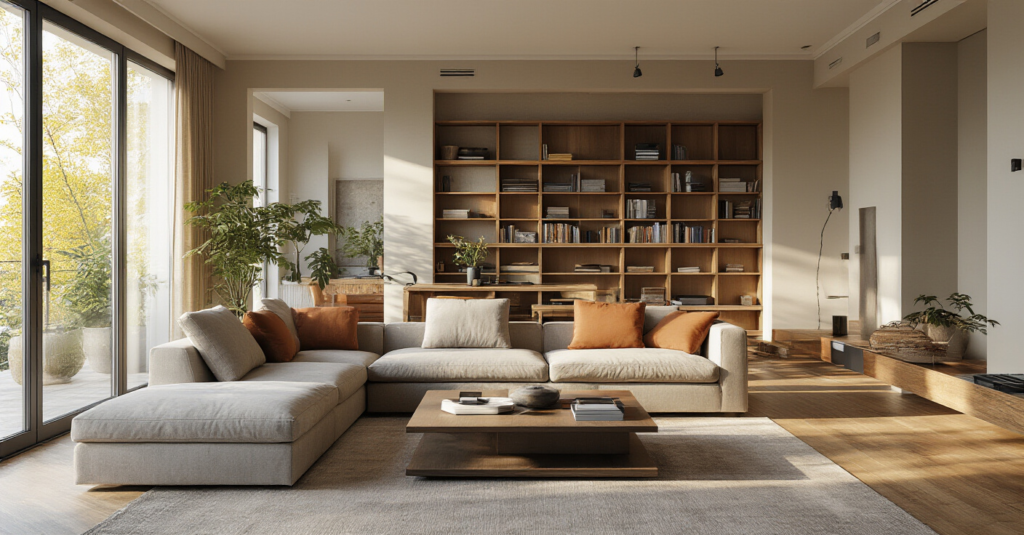Picture this: You are standing at the threshold of your living room. Before you step in, just pause for a moment and close your eyes. What do you wish to feel? Calm? Inspiration? A sense of release after a long day? Hold that feeling.
This is where true design begins. Not with a catalog of twenty styles, or a frantic search for what is “in.” People always ask me how to choose a style for their home, and they are surprised when I tell them not to. Do not choose a style. Instead, discover the feeling your spirit needs, and then find the objects that will help you create it.
The list that follows is what the world calls “styles.” But I want you to see them differently. They are not boxes to check or rules to follow. Think of them as different languages for expressing the same essential things: harmony, function, and peace. Let’s not worry about the noise of “what’s trending.” Let’s find what is true for you.
Phase 1: Laying Your Style Foundation
This first phase isn’t about making a plan; it’s about listening. Before you bring anything new into your home, you must first understand the space as it is, and the life you live within it. A room has its own spirit, its own light and shadow. Your first task is simply to become aware of it. This is a practice of observation, not of decoration.
1. Determine Your Living Room’s Functional Needs First
Forget checklists of “desired activities.” Instead, spend a week simply observing the rhythm of your own life. Where does the morning light fall? Where do you naturally gravitate to set down your tea? Where does the clutter accumulate? This is the room telling you what it needs. A pile of books is not a mess; it is a request for a shelf. A stack of mail is a sign that you need a designated place for life’s details.
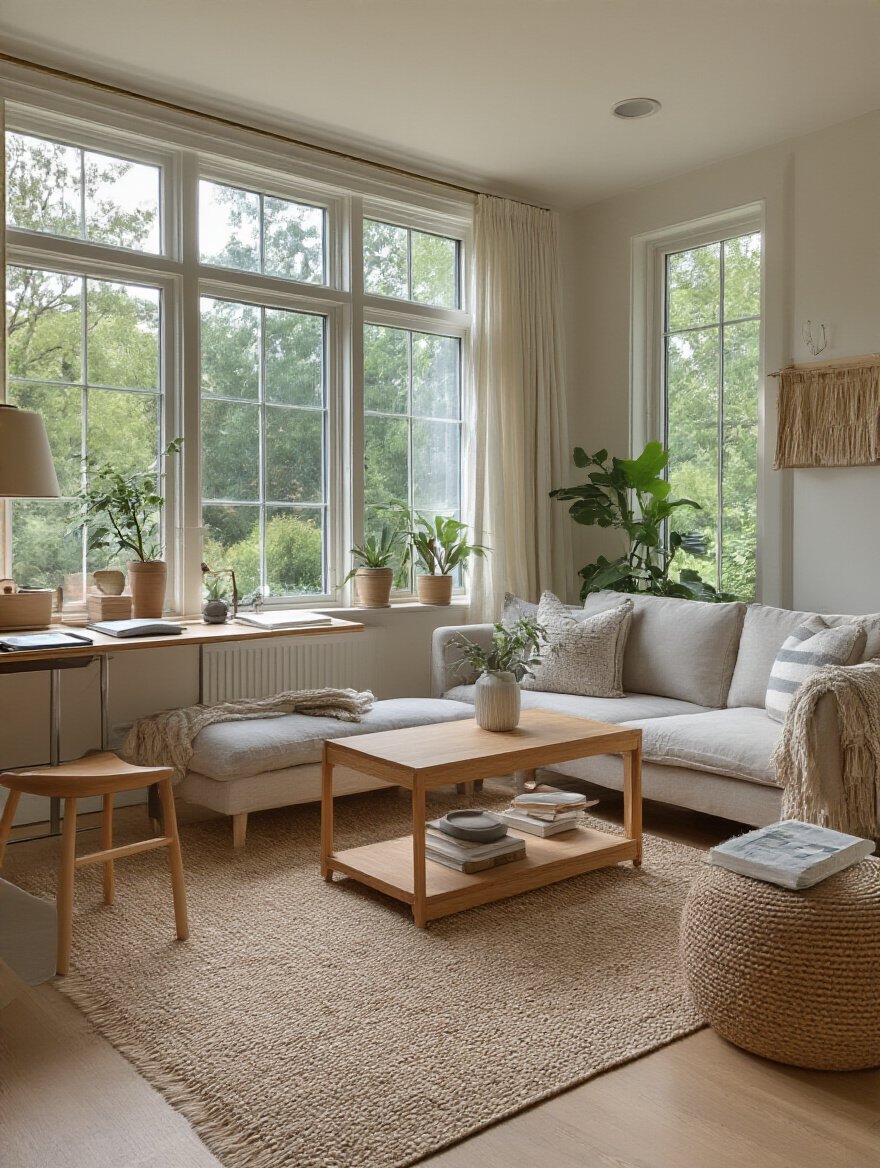
I once worked with a client who was frustrated with their “messy” living room. They had a beautiful, but very formal, sofa that no one ever sat on. Instead, everyone—the kids, the dog, the adults—always ended up on the floor, propped against cushions. The room wasn’t messy. It was just fighting its own nature. We replaced the stiff sofa with low, deep, comfortable floor cushions and a large, soft rug. Suddenly, the room felt harmonious. Because we listened to how they actually lived, not how they thought they were supposed to live.
This is the first and most important step. Watch the flow of life through your space like water in a stream. Design should follow that current, not fight against it.
2. Identify Your Personal Aesthetic Preferences (Beyond Trends)
Your personal aesthetic is not something you find on Pinterest. It is a quiet truth within you. It is the feeling you get when you see the texture of moss on a stone, or the clean line of a horizon. To find it, you must look inward. What colors bring your mind to a place of rest? What shapes feel honest and calm? What textures feel grounding to your hand?
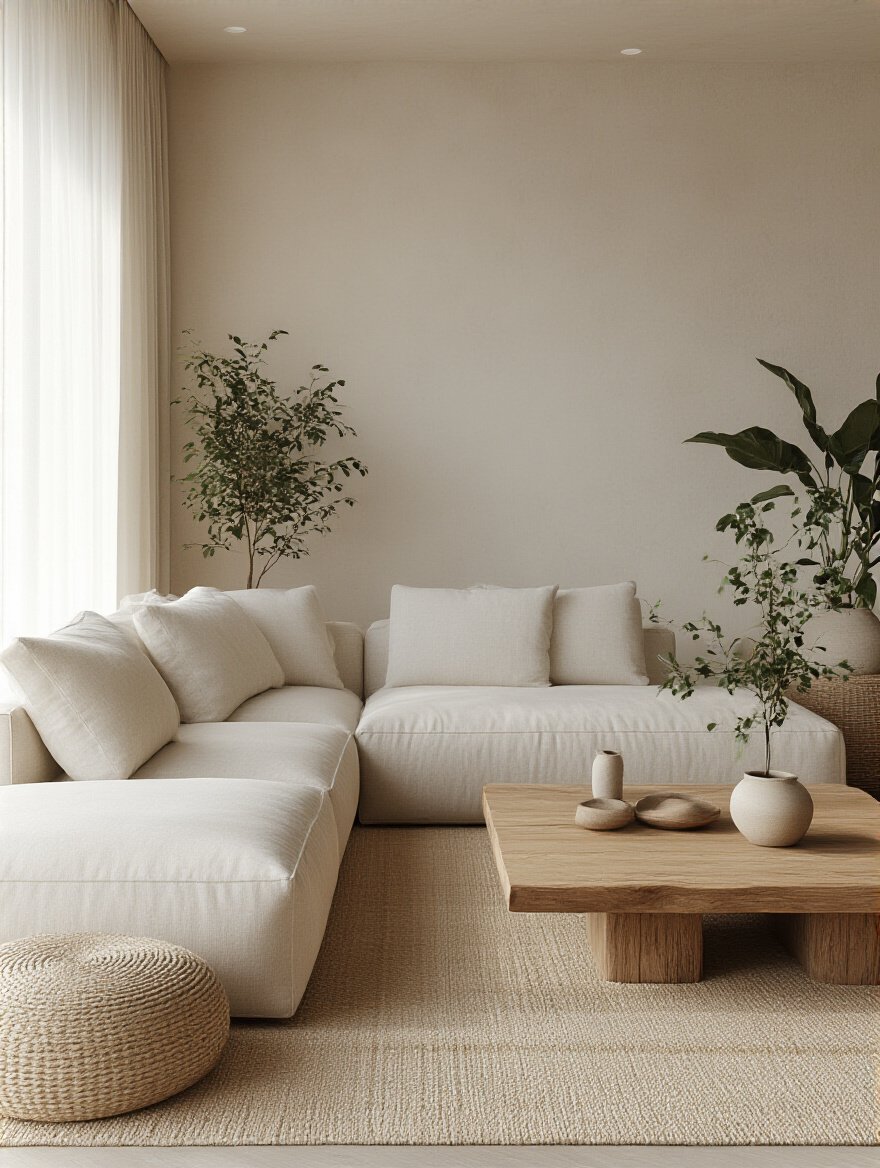
Forget the labels like “boho” or “glam” for a moment. They are just noise. The real work is to find the common thread in the things that genuinely move you. One of my shortcuts for this is to think about shibui—an aesthetic of simple, subtle, and unobtrusive beauty. It’s a beauty that is quiet, that doesn’t shout for attention, and that reveals its depth over time. You may find that your “style” isn’t a style at all, but a preference for materials that are honest, for light that is gentle, and for spaces that can breathe.
The big lie everyone is told is that your home is a reflection of your personality. I disagree. A home is a sanctuary for your personality. It should be a quiet place where your mind can settle, not a loud stage where you perform a certain look.
3. Assess Your Room’s Architectural Features for Style Compatibility
The walls, windows, and ceiling of a room are not a blank canvas. They are the vessel. They have their own history, their own proportions, their own voice. To ignore them is like trying to pour tea into a cracked cup. Before you force a style upon a room, take the time to appreciate the room itself. A room with low ceilings does not want a grand chandelier; it asks for low, horizontal forms that create a sense of grounded calm. A room with a wall of tall windows asks that you do not obstruct its view of the sky.
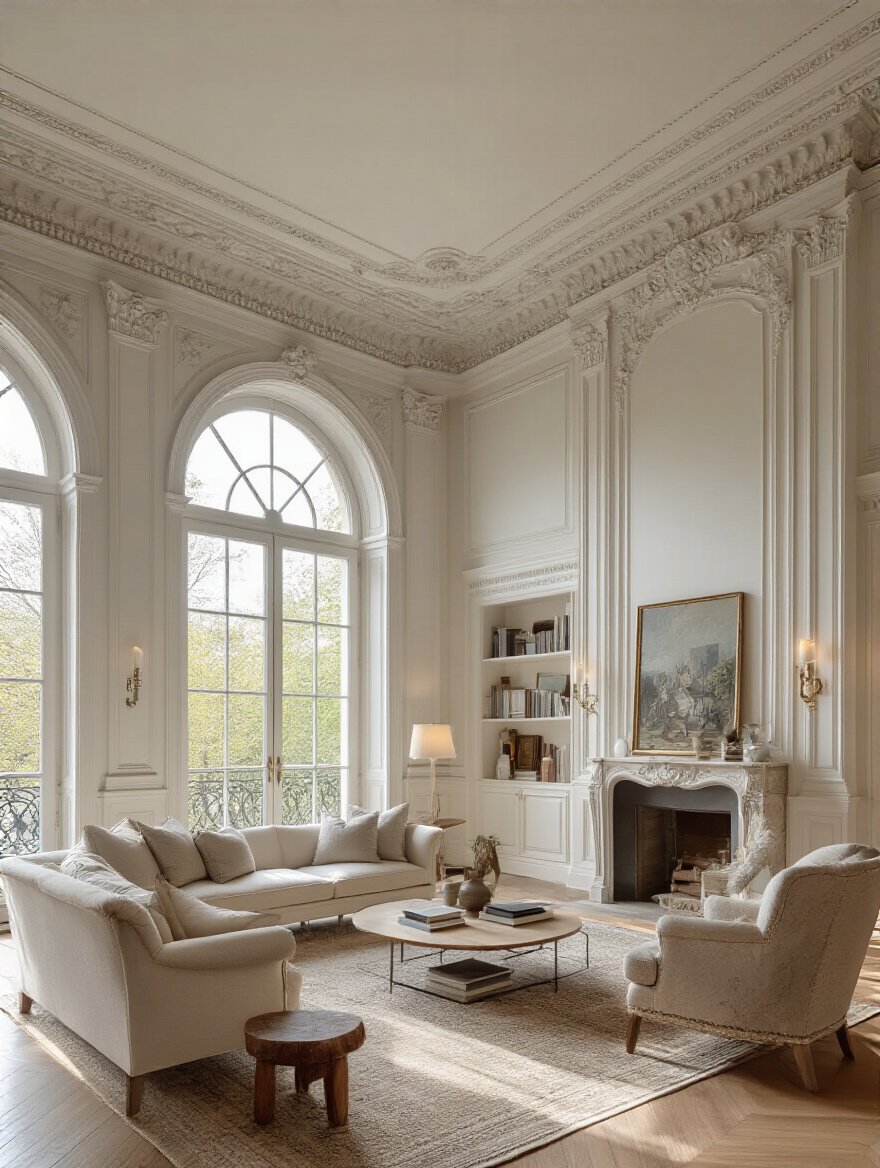
Your goal is to be in dialogue with the space. For example, if you have a prominent fireplace made of rough stone, you might echo that texture in a small way elsewhere, perhaps with a ceramic vase or a heavy linen throw. It is a quiet conversation between the elements. You are creating harmony, not imposing your will.
I learned this the hard way early in my career, trying to create a stark, modern space in a house with soft, curving archways. It felt wrong, a constant, low-level friction. The space was telling me it wanted softness, and I was trying to give it angles. The moment I surrendered and chose furniture that echoed those curves, the entire home seemed to sigh in relief.
4. Prioritize Comfort and Durability Within Any Style Choice
We are taught to chase what is new. But there is a deeper wisdom in choosing things that are made to last, things that can bear the marks of a life lived. This is the heart of wabi-sabi—finding beauty in imperfection, and accepting the natural cycle of growth and decay. A solid wood table that gathers scratches and water rings over decades of family meals is more beautiful, not less. It tells a story.
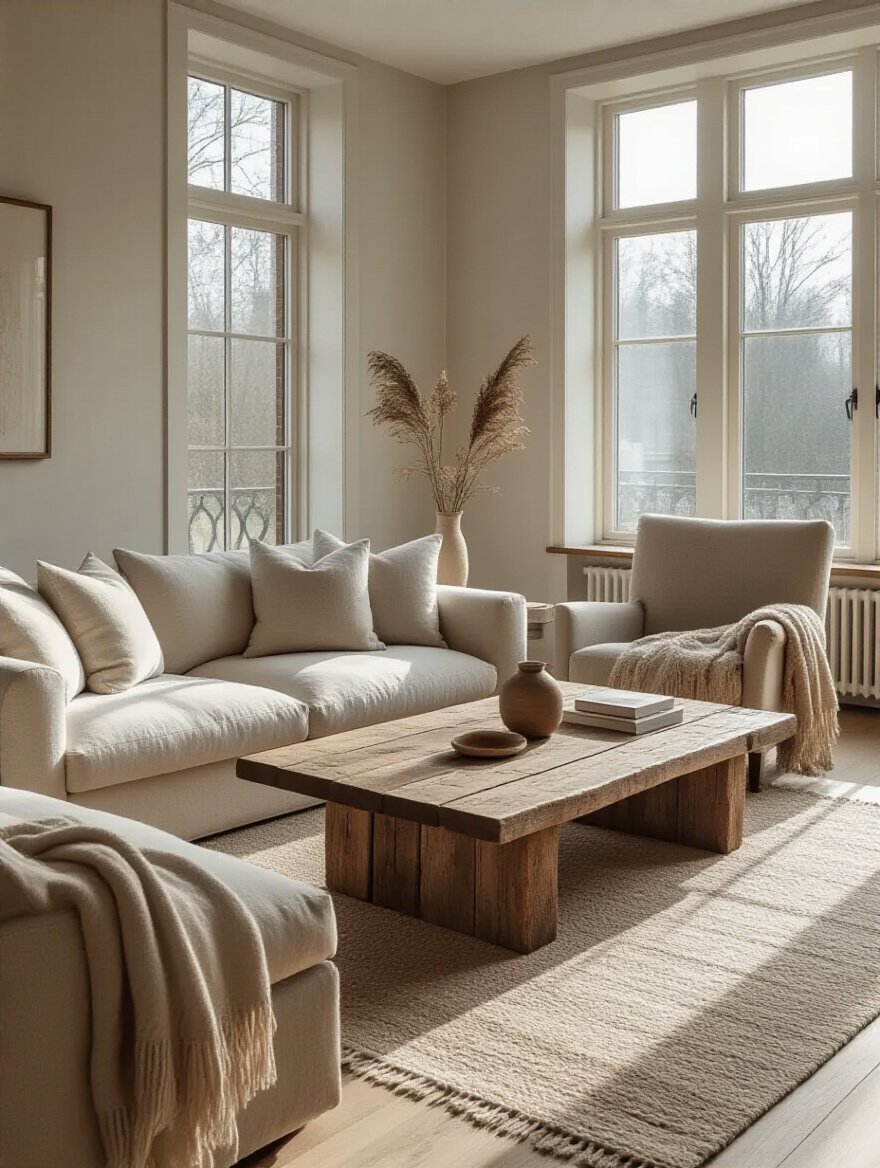
When you choose a piece of furniture, do not just look at it. Touch it. Sit in it. Imagine it in ten, twenty years. Will it hold its grace? A flimsy chair that breaks in a year creates waste and frustration. A well-made chair becomes a quiet companion for your life. The ultimate comfort is not just a soft cushion; it is the peace of mind that comes from owning something with integrity.
So, call out the illusion of “fast furniture.” It promises a quick and easy solution, but it delivers a temporary fix that ultimately clutters our homes and our planet. The true shortcut is to buy fewer things, but better things. It is an act of respect for the materials, for the craftsperson, and for your future self.
5. Set a Realistic Budget to Guide Your Furniture Style Options
Many people see a budget as a restriction. I see it as a beautiful, creative constraint. A budget is what forces us to be intentional. With unlimited funds, it is easy to accumulate things without thought. With a finite amount, you are required to ask: What is truly essential? What single piece will bring the most peace or function to this room?
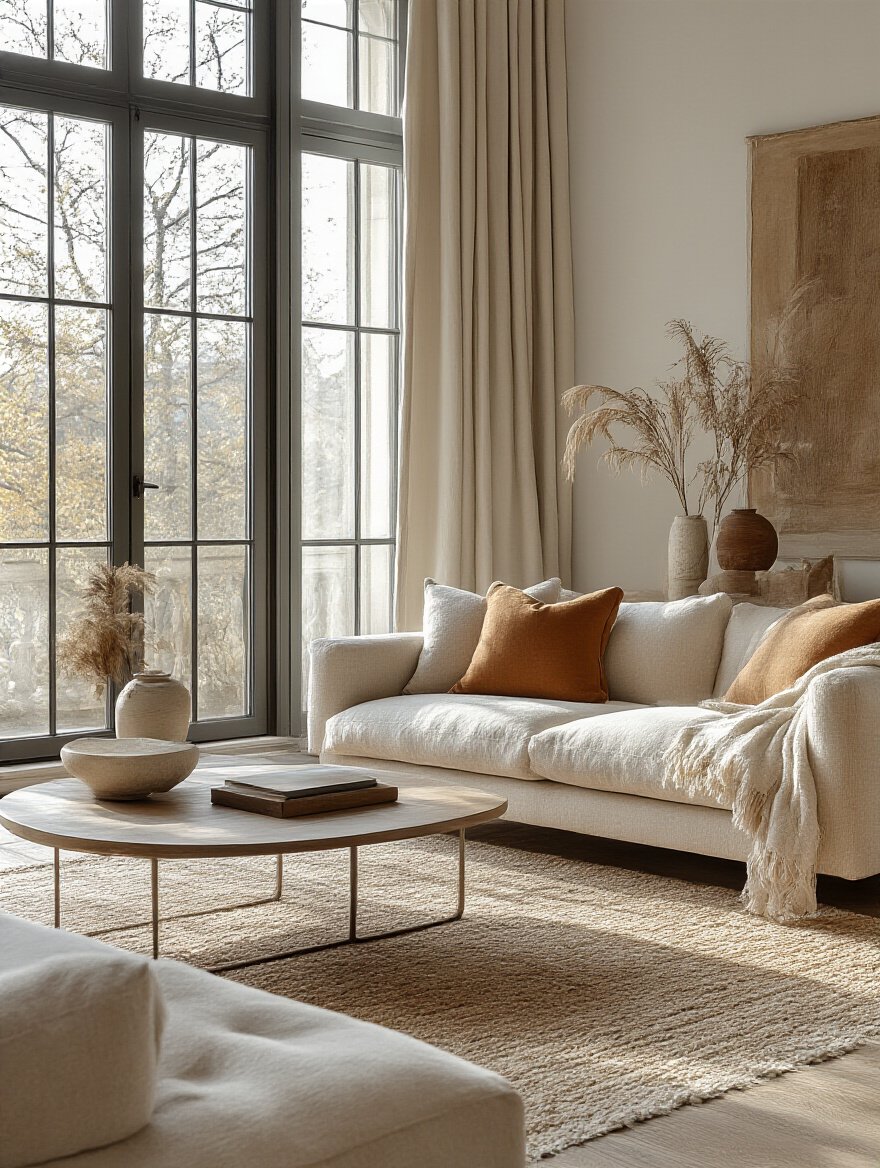
Think of it like a traditional Japanese rock garden, a karesansui. The gardener does not have an infinite number of rocks. They have a very specific, limited few. The art is in the placement, in the relationship between the rocks, and, most importantly, in the empty space between them. The limitation is what creates the beauty.
Your budget encourages this kind of focus. Perhaps you invest the majority in one perfect sofa, one that will last a lifetime, and live with simplicity around it. This is far more meaningful than filling the room with a dozen mediocre, forgettable things. Let your budget guide you toward quality over quantity. That is the most profound kind of luxury.
From these foundational thoughts, we can now look at the “styles” of the world not as prescriptive rules, but as various expressions of these core principles.
Phase 2: Decoding Core Furniture Style Archetypes
Now we arrive at the catalog of styles. As you read, do not think “Which one is me?” Instead, ask, “What principle does this style honor?” Each one is simply a different path to harmony. Some find it in historical elegance, others in raw simplicity. The key is to understand the feeling they evoke, and to borrow what resonates with your own quiet center.
6. Embrace the Timeless Elegance of Traditional Style Furniture
At its heart, Traditional design honors history and ritual. It speaks to a desire for permanence and structure. The curves of a cabriole leg or the depth of a tufted sofa are rooted in centuries of craftsmanship. There is a quiet dignity here, a sense of order that can be very calming in a chaotic world.
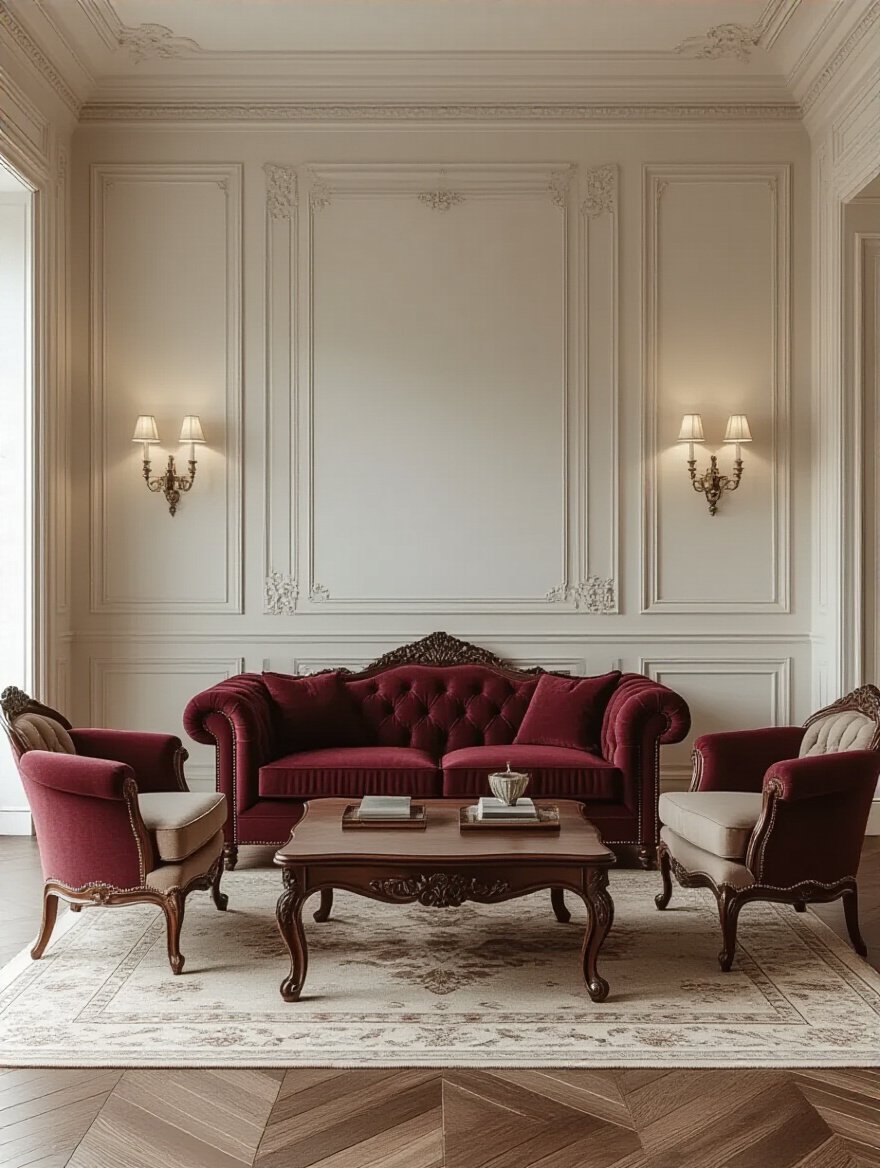
The danger, of course, is that this order can become stiff and lifeless. A room full of heavy, dark, formal furniture can feel like a museum, not a home. To find the spirit in this style, focus on the quality of the materials—the deep luster of polished wood, the heavy weight of velvet. Then, you must introduce breath. Leave space around these important pieces. Let a traditional armchair stand alone in a corner with a simple lamp, creating a small sanctuary for reading. Honor the form, but do not let it suffocate the space.
The transition from this old-world formality leads us, naturally, to a desire to strip away ornamentation and find beauty in pure form.
7. Discover the Clean Lines of Modern & Mid-Century Modern Design
This aesthetic resonates deeply with Japanese principles. It is about removing the non-essential to reveal the truth of a form. A Modern chair is beautiful not because of carved decoration, but because the curve of its structure is elegant and honest. It proudly shows how it was made and what it is made of—wood, steel, leather. There is no pretense.
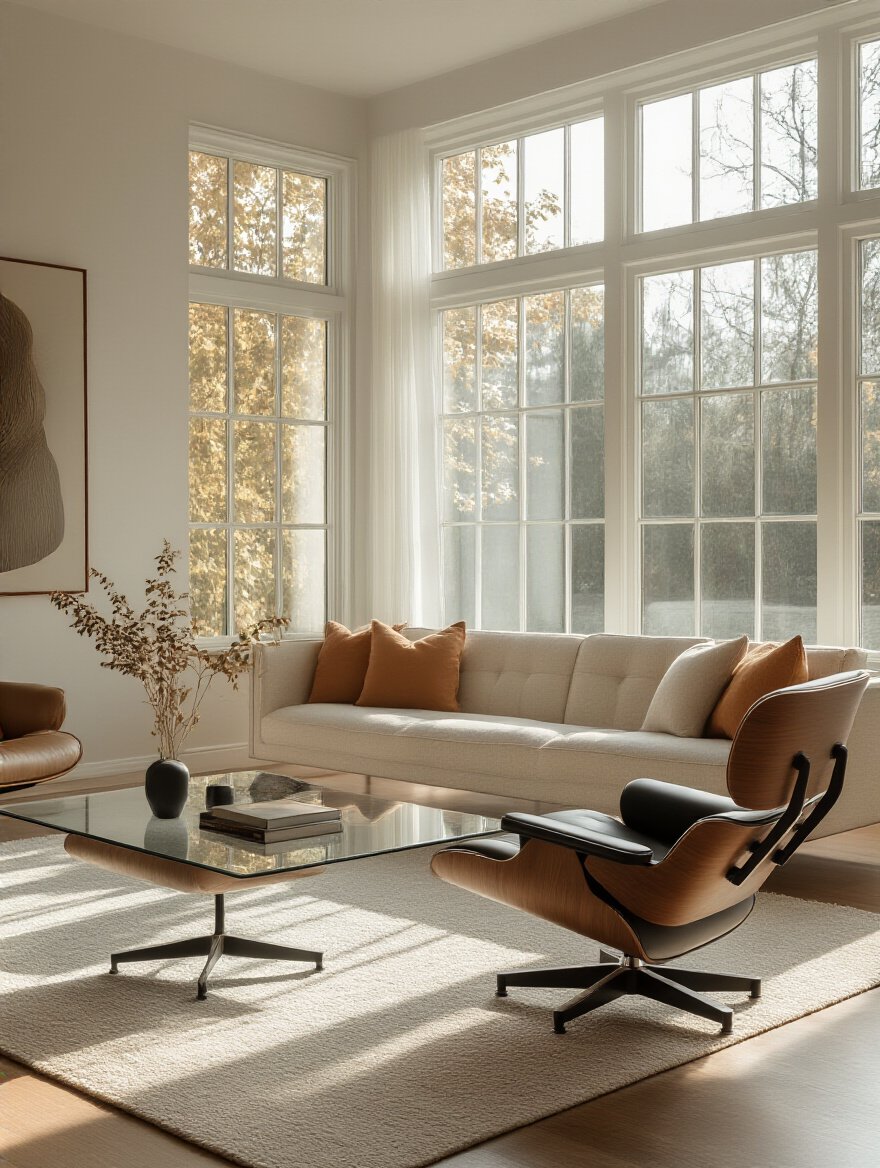
The guiding principle here is “form follows function,” and I would add that both must serve a third master: serenity. When choosing pieces in this style, focus on the “negative space” they create. The empty air beneath a leggy sofa or around a slender floor lamp is just as important as the object itself. This is the concept of ma—the essential void. It is the pause in music, the unpainted silk in a scroll. This style, when done well, is not about what is there, but about the beautiful emptiness it helps to shape.
When the pure rationality of Modernism meets the warmth of natural materials and human-scale comfort, it evolves into something softer and more organic.
8. Create Cozy Simplicity with Scandinavian Furniture Styles
Scandinavian design is the gentle cousin of Japanese aesthetics. We share a deep reverence for natural materials, especially light-toned wood, and an appreciation for craftsmanship that is both beautiful and useful. Where we may differ slightly is in the expression of warmth. The Nordic concept of Hygge—that feeling of cozy contentment—is brought to life with soft, layered textiles: wool throws, sheepskin rugs, linen cushions.
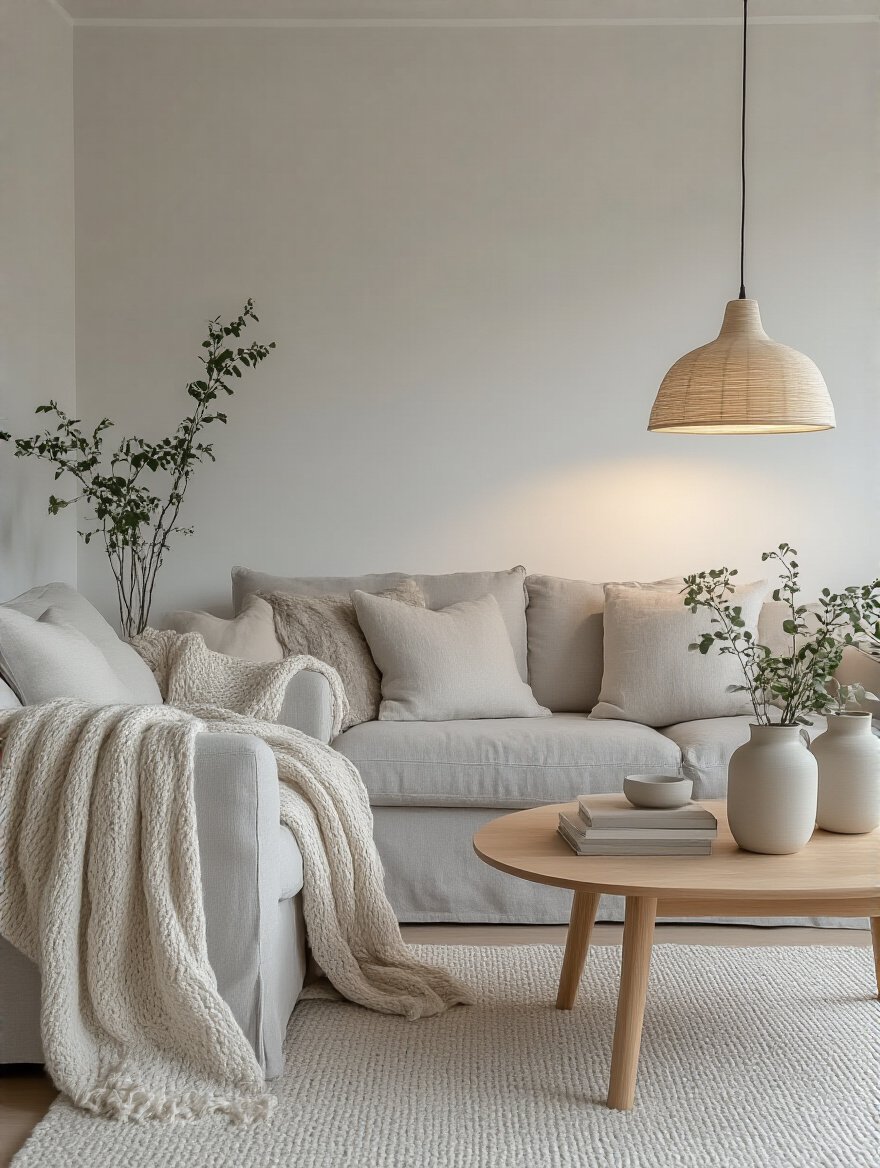
These elements are an invitation. They ask you to slow down, to curl up with a book, to share a warm drink with a friend. This style is not about creating a pristine, untouched space; it is about creating a gentle, functional, and deeply human refuge from the cold. The simplicity of the forms—clean, uncluttered lines—ensures the space remains peaceful and airy, while the textures provide the soul.
From the crafted simplicity of the north, we travel to an aesthetic that finds its beauty not in careful craftsmanship, but in the raw, untouched spirit of nature itself.
9. Achieve Rustic Charm with Natural and Distressed Elements
This is the most direct expression of wabi-sabi in the Western design world. Rustic design celebrates materials as they are: wood with its grain and knots exposed, stone with its rugged texture, metal with its weathered patina. It finds profound beauty in the marks of time and use. A gash in a reclaimed wood table is not a flaw; it is part of its history, a memory held in the material.
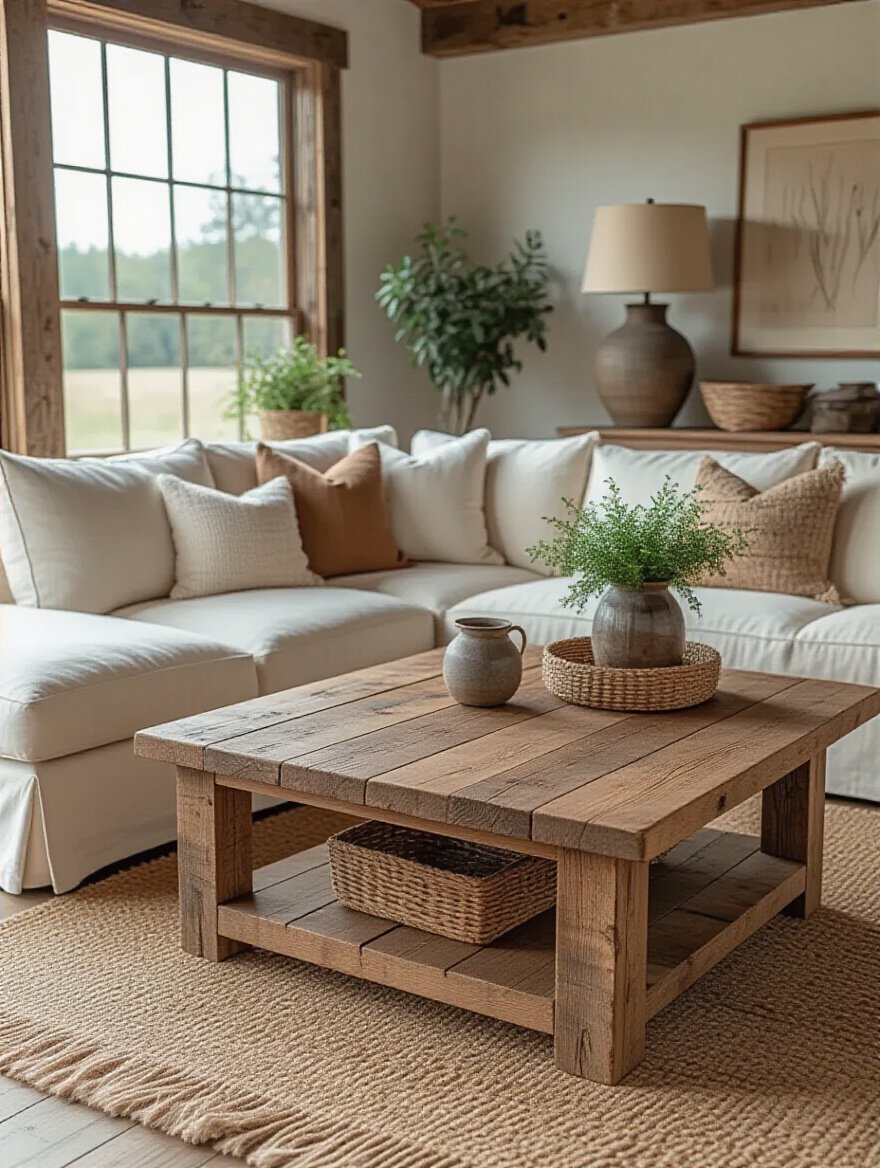
To bring this feeling into your home is to ground yourself in the earth. The weight of a solid wood table or a stone hearth provides a powerful sense of stability and permanence. The key is balance. A room filled entirely with heavy, dark, rustic pieces can feel like a cave. You must balance the rough with the smooth, the dark with the light. Pair a rough-hewn console table with a simple, modern sofa. Let one powerful rustic piece be the anchor, and surround it with light and air.
From the humble earthiness of Rustic, our eye is drawn upward, toward the glittering allure of polished surfaces and theatrical light.
10. Infuse Opulence with Glam and Hollywood Regency Furniture
At first glance, this style of mirrored surfaces, metallic sheens, and jewel-toned velvets may seem like the opposite of everything I speak of. And in a way, it is. It is a celebration of the man-made, the dramatic, the theatrical. It does not whisper; it proclaims. But even here, we can find a principle worth exploring: the manipulation of light.
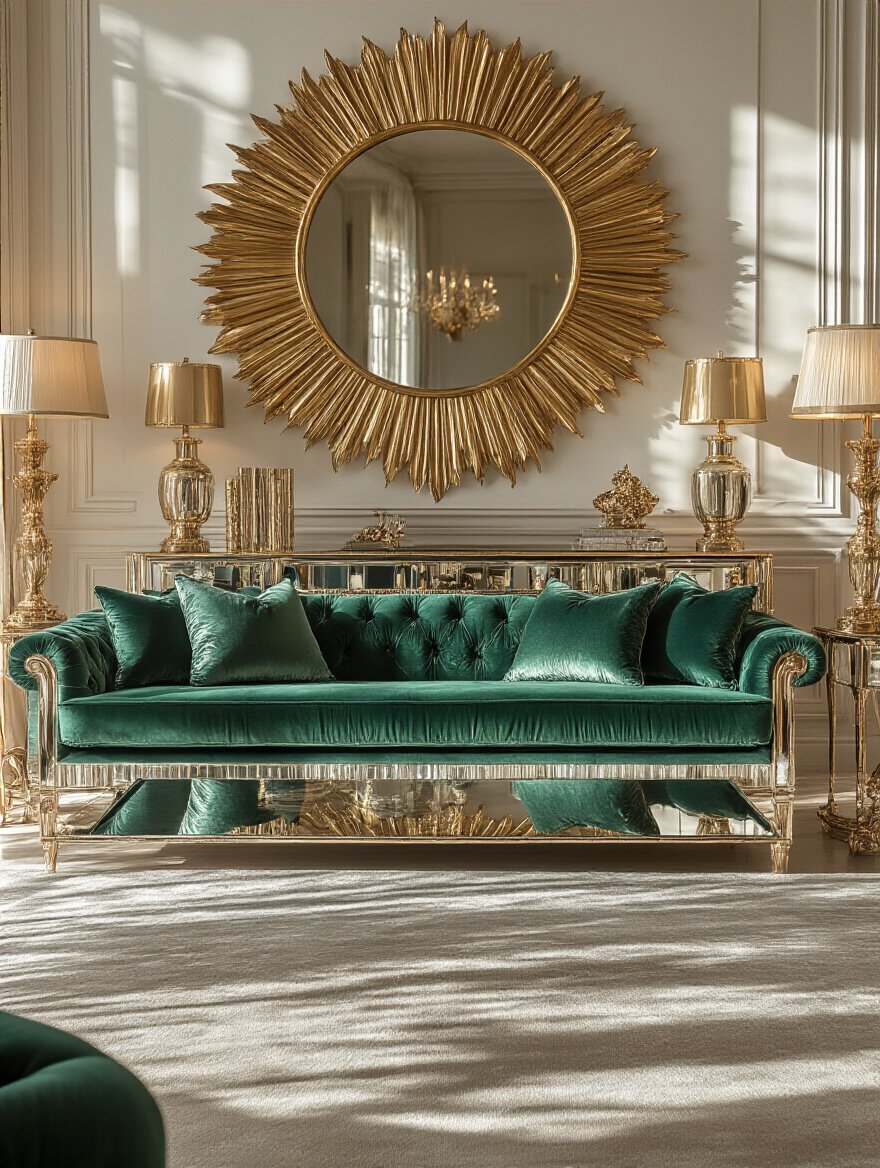
Reflective surfaces—a mirrored table, a lacquered cabinet, a polished brass lamp—do not just sit in a room. They actively engage with the light, fracturing it, bouncing it, making the space feel more alive and dynamic. This can be beautiful. The danger is that it can also become all surface, with no depth. A room that glitters but has no soul is a lonely place. The secret is to use these elements with intention. One or two reflective pieces can be a brilliant accent, a moment of surprise. But true luxury is not the shine of gold. True luxury is a feeling of deep, unshakable peace.
Having explored these foundational archetypes, let’s now look at the more nuanced aesthetics that have evolved from them, blending influences in surprising ways.
Phase 3: Exploring Niche & Evolving Aesthetics
Beyond the core traditions, design is a living language, constantly creating new dialects. These evolving styles show us what happens when ideas cross-pollinate—when the free spirit meets the raw city, or when ancient philosophies are reinterpreted for modern life. See these not as rigid categories, but as inspirations for your own unique blend.
11. Cultivate Free-Spirited Eclecticism with Bohemian Furniture
Many people misunderstand this style as permission for clutter. They see a riot of patterns, textures, and objects and think the goal is simply “more.” But the true Bohemian spirit is not about accumulation; it is about curation. It is the art of telling your life’s story through the objects you have gathered. Each piece—a rug from a journey, a cushion made by a friend, a collection of pottery from flea markets—should hold a memory.
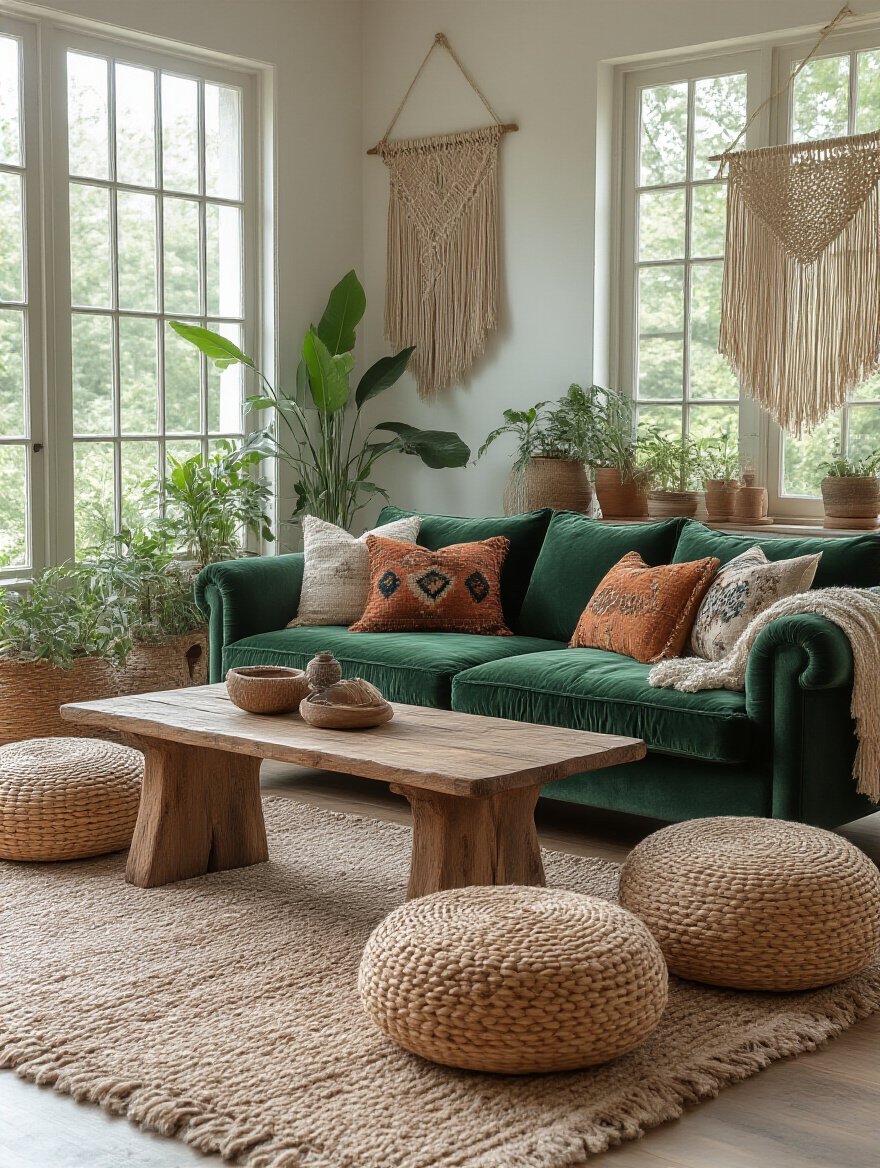
The art is in arranging these stories so they create a harmonious whole, not a chaotic shouting match. Find a common thread—perhaps a recurring color, or a consistent use of natural fibers like jute and linen—to weave through your collection. Think of your room as a poem made of objects. Each piece is a word. Do they flow together? Do they create a feeling of warmth, of a life fully and joyfully lived? That is the goal.
From this collected, personal aesthetic, we turn to one that finds its beauty not in keepsakes from distant lands, but in the honest materials of our immediate, urban world.
12. Channel Raw Urban Edges Using Industrial Furniture Styles
This style is about honesty. It strips away the surface to reveal the structure beneath: the exposed brick of a wall, the steel beams of a ceiling, the simple mechanics of a piece of furniture. It finds beauty in the utilitarian, the functional, the strong. There is a raw power here that can be very compelling. An iron table or a raw wood shelf feels solid, dependable, and true to itself.
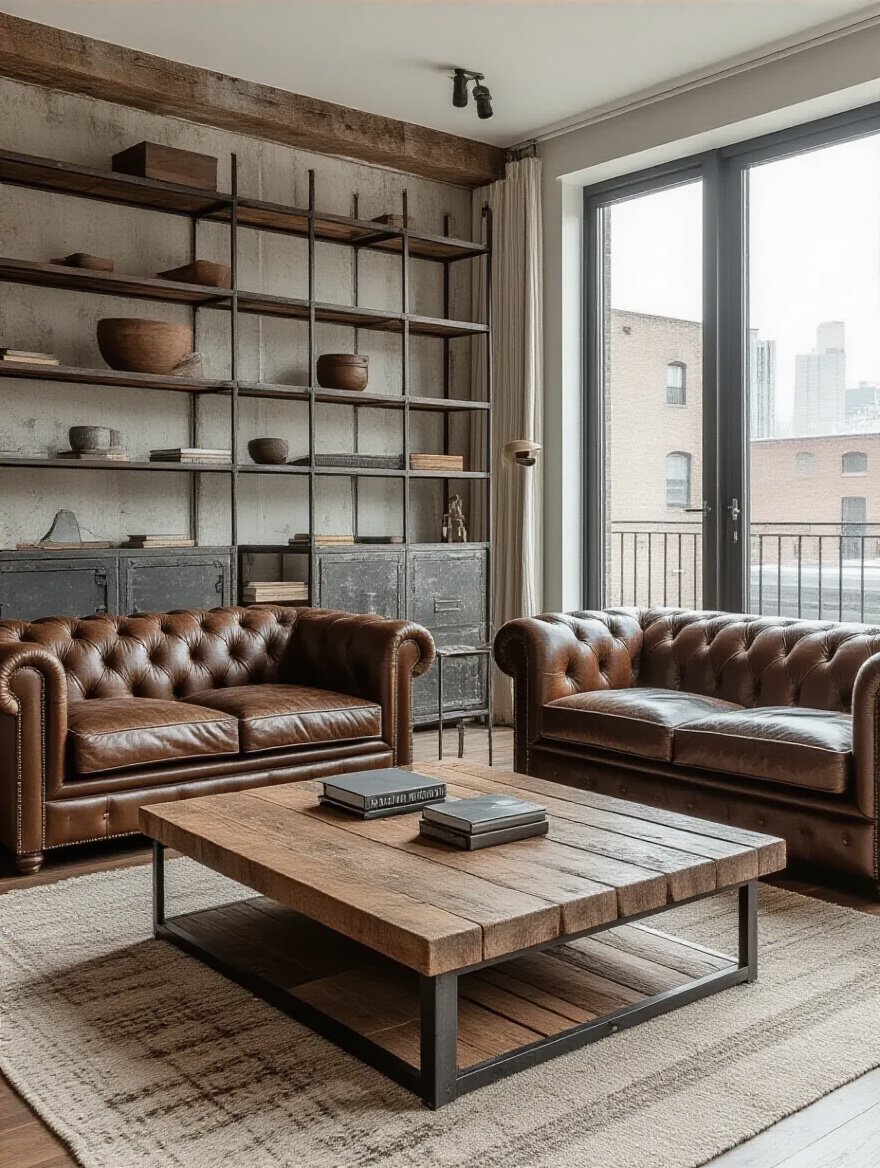
The challenge is to make it human. A purely industrial space can feel cold, hard, and unforgiving—like a factory, not a home. You must introduce softness to balance the strength. The most powerful way to do this is with textiles: a plush velvet sofa against a brick wall, a soft, high-pile rug on a concrete floor, a pool of warm light from a simple lamp in the corner. It is this contrast, this dialogue between hard and soft, that creates a truly compelling industrial space.
Moving away from the dense city, our next style takes us to the shore, where the defining elements are not brick and steel, but air and water.
13. Breathe Freshness into Spaces with Light Coastal Furniture
The essence of a Coastal aesthetic is not seashells and anchors. Please, avoid the clichés. The true feeling is one of release. It is the sensation of an open horizon, a gentle breeze, and unending light. This style is a master class in the use of ma, or negative space. It achieves its effect by what it leaves out. The color palette is pale and restrained to better reflect light. The furniture is often raised on slender legs to create a sense of airiness.
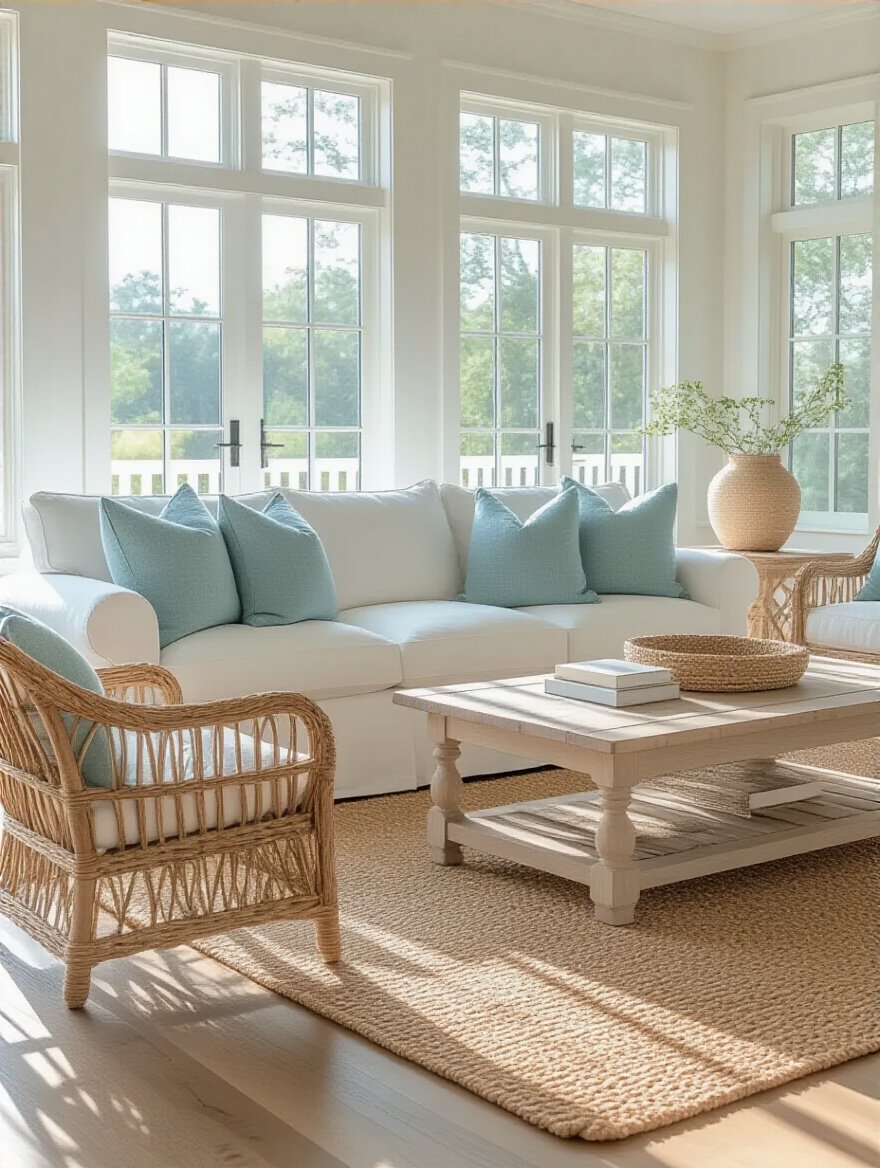
Materials are key. Lightly weathered woods, woven rattan, and simple, washable linens all contribute to a feeling of relaxed ease. This style asks nothing of you. It is a calm, quiet backdrop for a peaceful life. It’s about creating a space that feels like a deep, cleansing breath. And you do not need to live by the sea to crave that feeling.
From this place of pure simplicity, we look to an approach that seeks to masterfully blend the best of different worlds.
14. Blend Old and New Seamlessly with Transitional Furniture Pieces
This is perhaps the most thoughtful and difficult style to achieve well, but also the most rewarding. It is a quiet conversation between the past and the present. A Transitional space doesn’t cling to one era; it builds a bridge between them. It might pair the elegant, historical lines of a traditional sofa with the clean, unadorned surface of a modern coffee table.
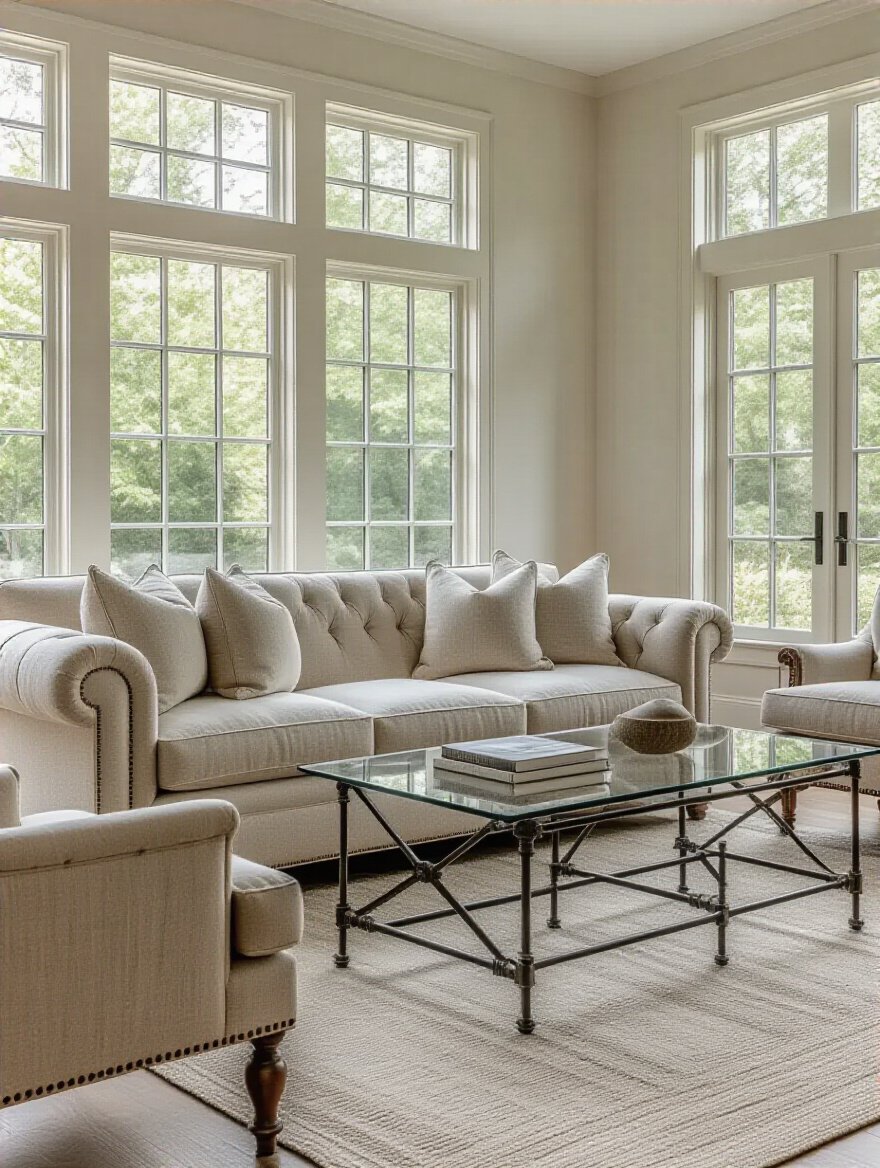
The secret to making this work is to find a shared sensibility. The pieces, though from different times, must speak to each other in a common language. This might be a shared color palette of calm neutrals. It might be a common level of quality and craftsmanship. The goal is to create a space that feels timeless—neither old-fashioned nor aggressively trendy, but enduring. It’s a sign of a mature eye, one that can appreciate the wisdom of the past while living gracefully in the present.
Our final exploration takes this impulse for simplicity to its most focused, intentional conclusion.
15. Master Uncluttered Serenity with Minimalist Furniture Styles
This is often the most misunderstood style of all. Western minimalism is frequently seen as cold, sterile, and empty. A sacrifice. But true minimalism, as I practice it, is not about subtraction for its own sake. It is about addition by subtraction. By removing every non-essential object, every distraction, you are not left with emptiness. You are left with a profound presence of what remains.
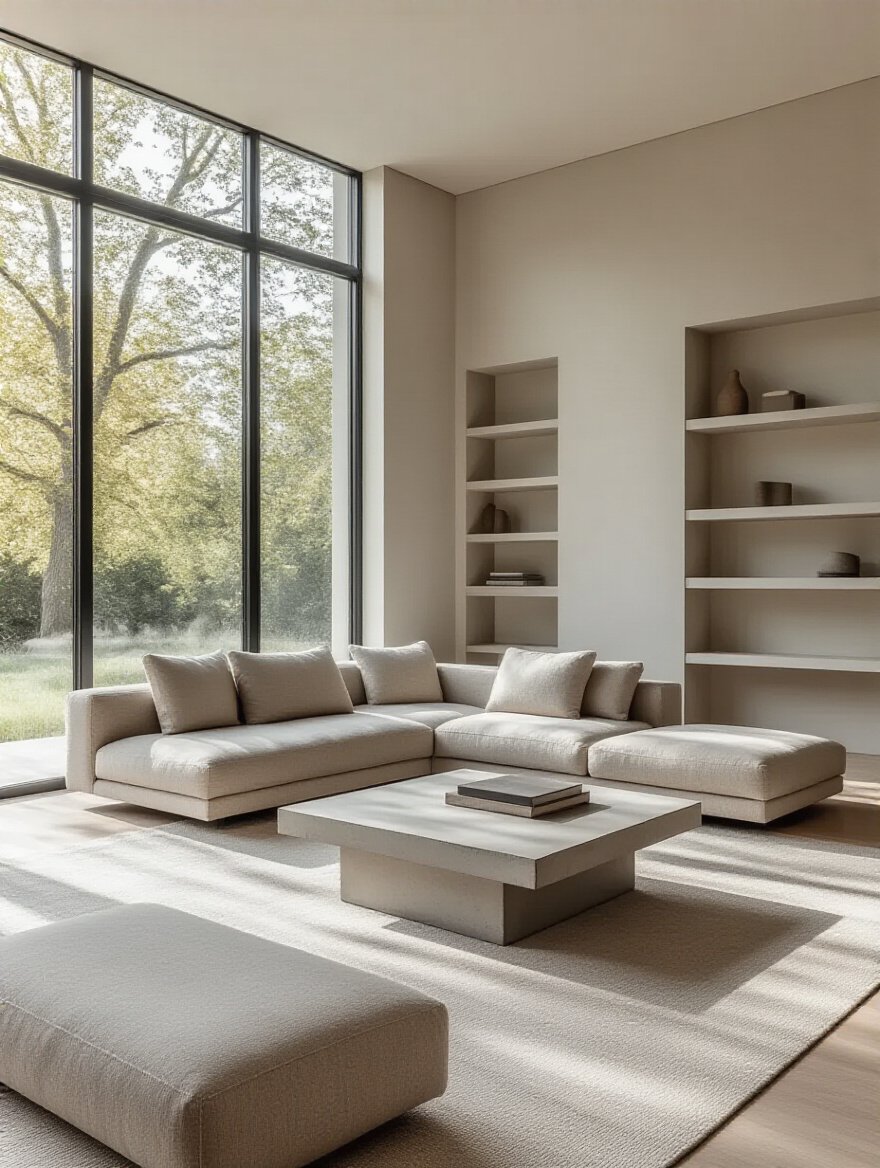
Each object in a minimalist room must be chosen with incredible intention. It must be either profoundly useful or exquisitely beautiful—ideally, both. The space itself—the ma—becomes a key element. It is a canvas for light and shadow to play across throughout the day. This is not emptiness; it is a space for your mind to be calm. It is the ultimate luxury: a room that asks nothing of you, a room where you can simply be. The real BS is that minimalism is about having less. It is about making room for more of what matters: more peace, more thought, more life.
Having considered these languages of design, the final phase is about composition—how you arrange these words and phrases into a beautiful, flowing sentence.
Phase 4: Harmonizing & Elevating Your Chosen Style
You have listened to your space and to yourself. You have explored the various ways of expressing harmony. Now, it is time for the final, subtle art of integration. This is what separates a room with nice furniture from a room with a soul. It is about creating flow, layering texture, and painting with light.
16. Learn to Mix & Match Complementary Furniture Styles Successfully
Think of this not as “mixing styles,” but as “hosting a good conversation.” You would not invite five people who all shout over each other to a dinner party. You would invite people with different perspectives who can speak to each other with respect. It is the same with furniture. A mid-century chair and a traditional sofa can have a beautiful dialogue if they are united by a common element—a shared color, a similar scale, or simply a feeling of quiet elegance.
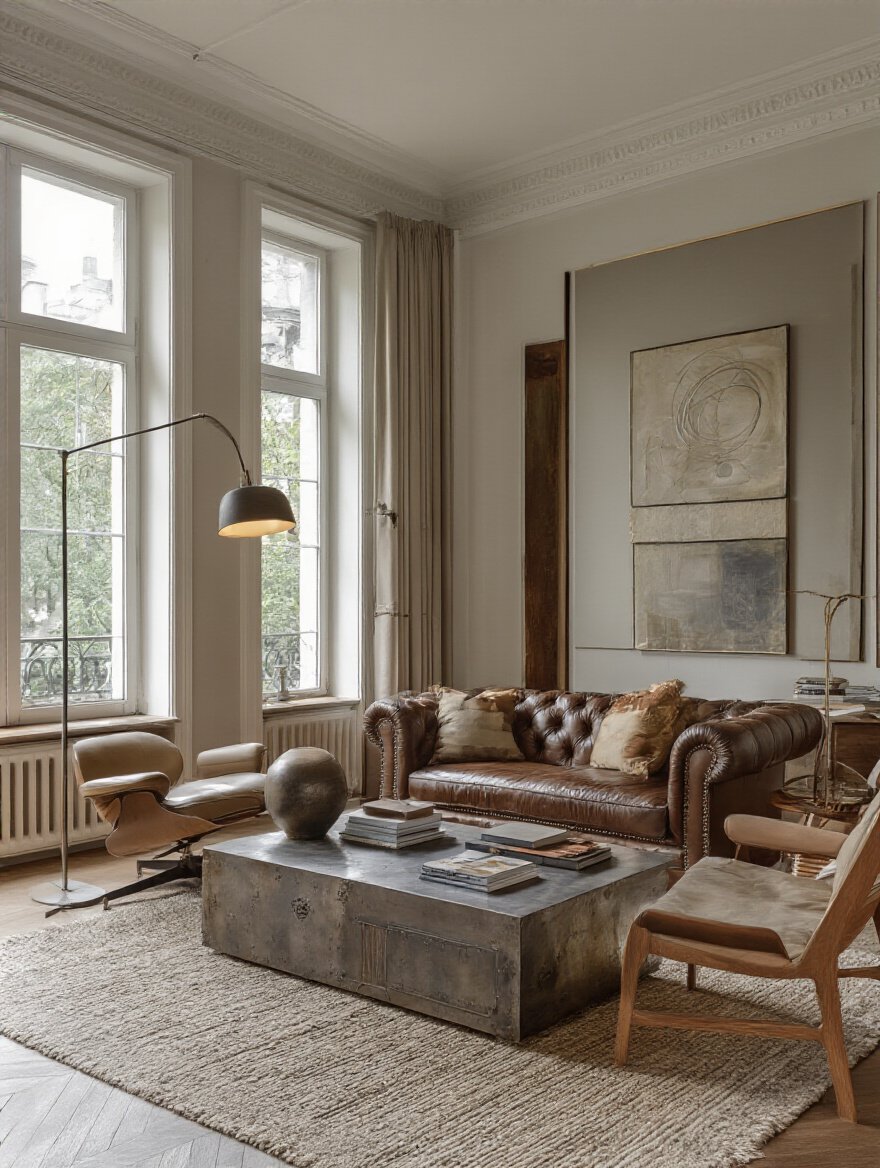
The 80/20 rule mentioned in articles can be a useful guide. Let one style be the main host (80%), the dominant voice in the room. Then, invite a guest from another style (20%) to add an interesting counterpoint. For example, a mostly modern room can be warmed by a single, rustic, reclaimed wood bench. This single point of contrast makes the entire room more interesting and more personal.
Now, within that conversation, we must identify the primary speaker—the one element that grounds the entire composition.
17. Select Statement Pieces to Anchor Your Living Room’s Style
Every harmonious composition has a focal point. In a room, this is the “heart.” It is the first place your eye rests. A statement piece doesn’t have to be loud or dramatic. Its power comes from its integrity and its placement. It could be a sofa with a perfect, simple form. It could be a single, beautiful piece of art. It could even be a humble tansu chest, chosen for the quiet story its aged wood and iron hardware tells.
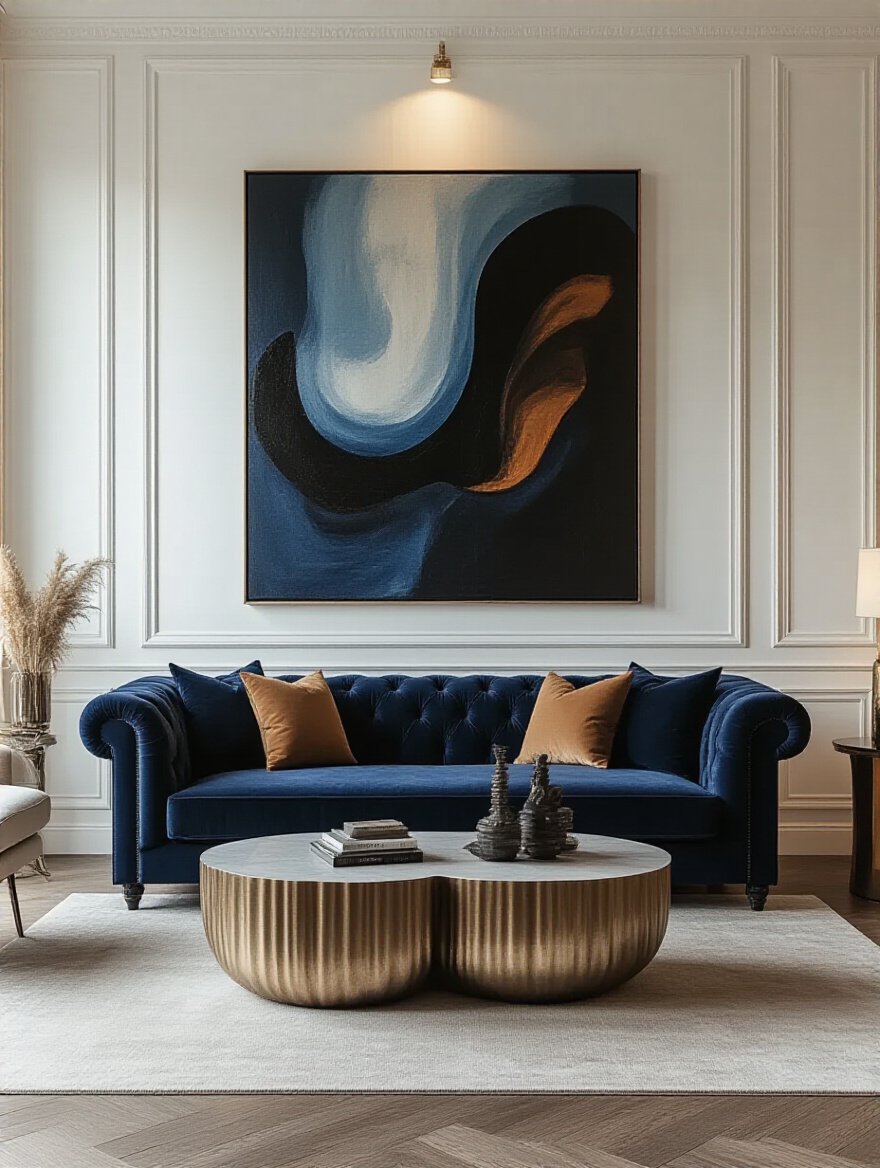
A confession: I once designed an entire room around a single ceramic bowl a client had made. It was small, imperfect, and full of grace. We chose colors and textures for the entire space that would honor that one small object. We let its quietness be the anchor. Do not think you need something big or expensive to be a statement. You just need something that feels true. Let one piece hold the soul of the room, and let everything else be its quiet supporter.
With the main forms in place, we add the final layers of human touch.
18. Incorporate Textiles & Decor to Reinforce Your Style Aesthetic
If the furniture is the bones of a room, textiles are the skin and the breath. They are what make a space feel alive. The way a linen curtain filters the sunlight, the feel of a soft wool throw, the sound-dampening quality of a good rug—these are the details that transform a house into a home. They appeal to our sense of touch, our sense of comfort, our need for softness.
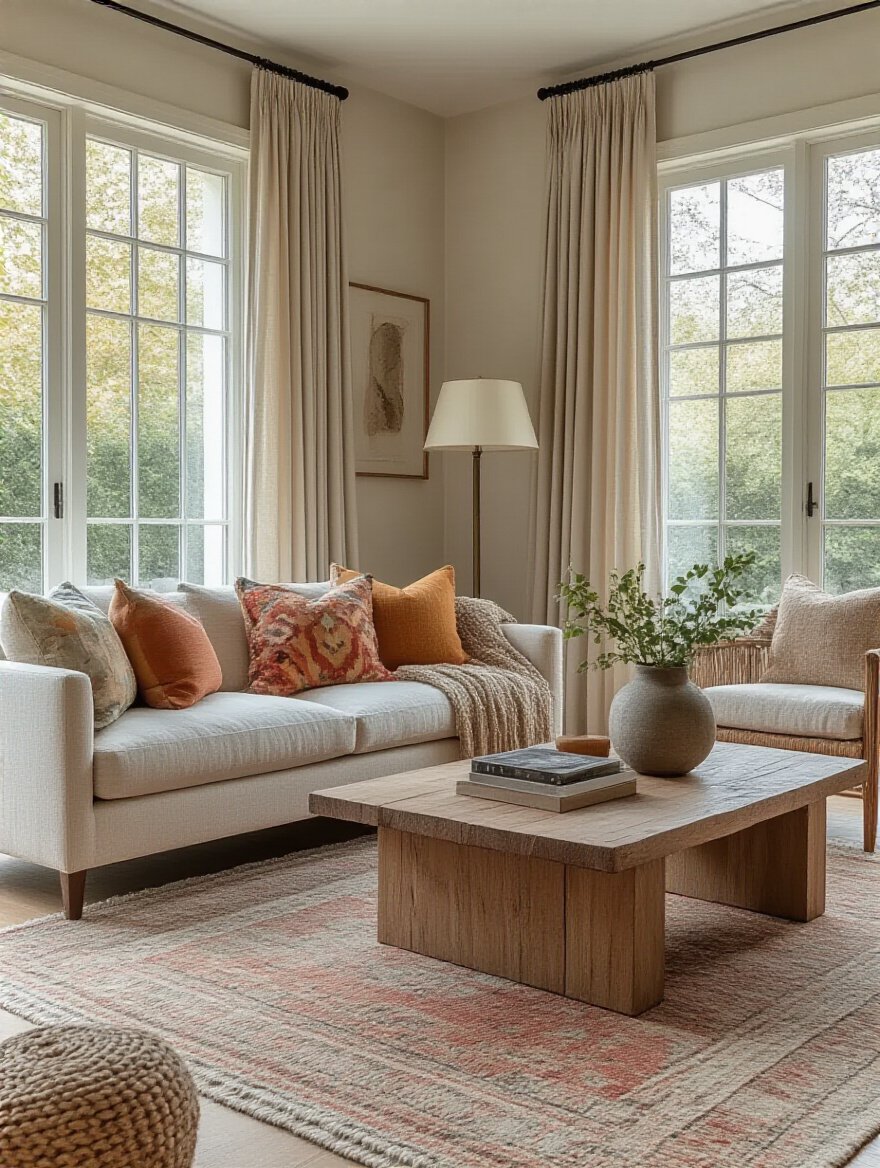
When you choose these elements, think about texture above all else. A room with only smooth, hard surfaces will always feel cold, no matter its style. You must introduce a variety of textures: rough and smooth, thick and thin, soft and coarse. Even in the most minimalist space, the contrast between a smooth concrete floor, a nubby linen sofa, and a sleek glass vase is what creates sensory richness and life.
Beyond the things we can touch, we must consider the most essential, yet intangible, element of all.
19. Utilize Lighting Strategies to Enhance Your Furniture’s Chosen Look
In his book In Praise of Shadows, Jun’ichirō Tanizaki wrote about the beauty of the subtle, nuanced light in traditional Japanese homes. He understood that light is not just for seeing—it is for feeling. The Western obsession is to eliminate all shadow, to flood every corner with bright, even light. This creates a flat, lifeless space.
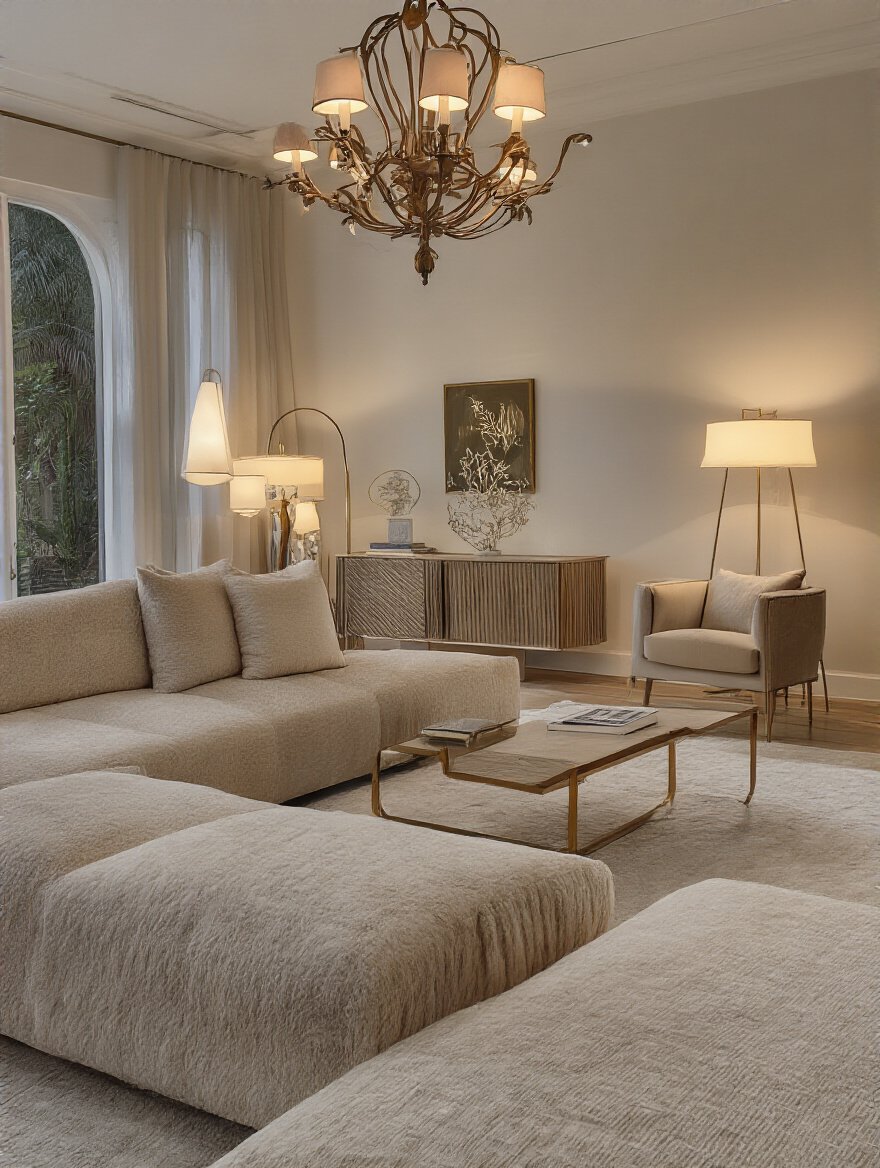
True mastery of lighting is about painting with shadow. A single overhead fixture is the enemy of ambiance. Instead, think in layers. Have a low, warm pool of light from a lamp in a corner for reading. Have a soft, indirect glow washing up a wall. Perhaps a single, focused beam highlights a piece of art. And most importantly, use dimmers. Being able to adjust the light to suit the time of day, the season, or your mood is essential for creating a room that feels responsive and alive.
Finally, we must ensure that the peace we create in this one room flows gently throughout the rest of the home.
20. Ensure Style Cohesion Across Your Entire Home for Flow
A home should feel like a single, continuous journey. Walking from one room to another should not feel like changing the channel on a television. It should feel like turning a page in the same book. This doesn’t mean every room must be identical. That would be boring. It means they must share a common thread, a subtle echo.

The simplest way to create this flow is with a unified palette of color and materials. Choose three to five core colors and a few key materials—a particular tone of wood, a type of metal—and let them appear in different ways in each room. The living room might have a walnut coffee table, while the dining room has walnut chairs, and the kitchen has walnut shelves. It is a quiet, continuous note that ties the whole composition together, creating a sense of serene, intentional harmony from the moment you step through the front door.
Conclusion
So, we come back to where we began. At the threshold of your living room, with your eyes closed, searching for a feeling.
The world will offer you twenty, or a hundred, styles to choose from. It will tell you what is new and what you “must” have. This is all noise. The real work of creating a home is quieter, and it happens inside of you. It is a process of listening to the space you inhabit, honoring the life you live, and choosing only those things that bring you a sense of profound and simple peace.
Forget the styles. Forget the trends. Trust the quiet voice within you that knows what it needs to feel at rest. Your dream living room is not a picture in a magazine. It is a feeling. It is the deep, silent satisfaction of a space that is a true sanctuary for your spirit. It awaits your discovery.
